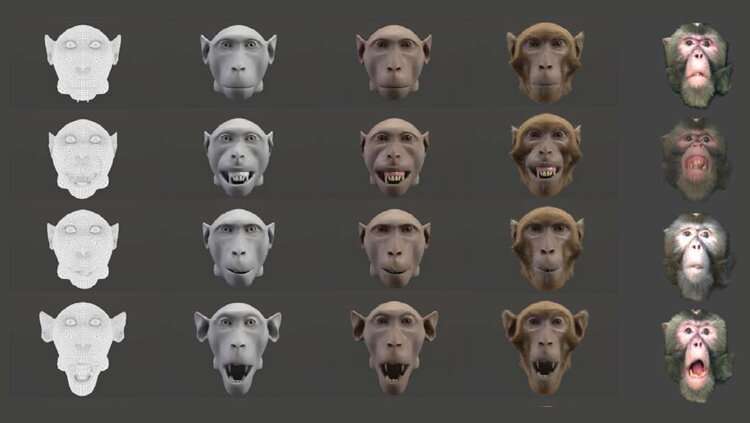Monkeys appreciate lifelike animation

Monkeys can overcome their aversion to animated monkeys through a more realistic avatar, according to research recently published in eNeuro.
Humans feel more comfortable toward life-like humanoid robots, but if a robot gets too life-like, it can become creepy. This "uncanny valley" effect plagues monkeys, too, which becomes a problem when scientists use animated monkey faces to study social behavior. However, monkeys overcome the uncanny valley when presented with a sufficiently realistic monkey avatar created using movie industry animation technology.
Siebert et al. compared how Rhesus monkeys reacted toward five types of monkey faces: video footage from real monkeys, a natural looking avatar with fur and facial details, a furless avatar, a greyscale avatar, and a wireframe face.
The monkeys looked at the wireframe face but avoided looking at the furless and greyscale avatars, showing the uncanny valley effect at work. However, the natural looking avatar with fur overcame this effect.
The monkeys looked at the model and made social facial expressions, comparable to how they would act around real monkeys. Using this type of avatar will make social cognition studies more standardized and replicable.
More information: A Naturalistic Dynamic Monkey Head Avatar Elicits Species-Typical Reactions and Overcomes the Uncanny Valley, eNeuro, DOI: 10.1523/ENEURO.0524-19.2020
Provided by Society for Neuroscience




















